Basic rules when dealing with leather
From www.leather-dictionary.com - The Leather Dictionary
Basic rules when dealing with leather
Leather is a beautiful and natural material. As long as the most important and basic maintenance practices are followed, it remains beautiful, durable and lasts longer.
Solvent-containing products or excessive rubbing will damage the surface colouration.
Improper cleaning attempts often make the stains worse. Some stains develop lighter or darker outer edges.
Basic rules when dealing with leather furniture
- First check whether the leather is absorbent. On absorbent leathers (aniline leather, suede, nubuck) if you rub in a drop of water, it will penetrate the surface and darken the leather. On non-absorbent leathers, the water runs off. Absorbent leathers are much more sensitive.
- First test all products and treatments in a hidden area. Especially when working on absorbent leather. Absorbent leather can easily be damaged if treated incorrectly.
- Regular cleaning and maintenance of furniture leather prevents staining and signs of wear and extends the life span.
- Always clean dirty leather before using leather care products.
- Let the leather dry naturally. Do not use a hairdryer and do not dry in direct sunlight, otherwise the leather can shrink.
- Light leathers are sensitive to “dye transfer from jeans and clothing” or other forms of dye transfers. When stains become visible always clean immediately to avoid dye penetrating the surface.
- Always work with the recommended products from seam to seam.
- Don’t rub too hard on stains which cannot be removed. You may damage the surface entirely. Contact a specialist first.
- Don’t use aggressive solvents (acetone, nail polish remover, turpentine etc.) or abrasive liquids |to remove stains and dirt. You will cause damage.
- Don’t use the wrong care products like shoe polishes and cosmetic creams.
- Leather changes when exposed to sunlight and heat. It can fade and become dry. Try to avoid direct sunlight and keep leather away from any sources of heat. Always use care products with UV protection.
- Leather develops signs of wear after a while. It can fade over the years. If changes occur (e. g. scratches, stains, fading), react quickly. The earlier leather is treated, the easier it is to keep the leather in good condition over a long period.
- Leather has an optimum humidity of 40 to 60% and needs ventilation. When humidity is above 70% and/or without enough air circulation, leather can become mouldy.
- Coloured leather furniture, especially porous leather, oiled or waxed leather or suede should not be pushed or placed directly against light coloured walls with rough surfaces to avoid colour transfer on the wall. A simple test: Rub with a light, damp cloth on a hidden area of the leather and check the colouration. It is normal to have light discolouration when testing these types of leather.
Basic rules when dealing with car leather
- Apart from a few exceptions, automotive leather is provided with a protective colour coating. If in doubt, first check whether the leather is absorbent (porous) or non-absorbent. On absorbent leathers - (aniline leather, suede, nubuck) if you rub in a drop of water, it will penetrate the surface and darken the leather. On non-absorbing leathers water runs off or stays on the surface. Absorbent leathers are much more sensitive.
- First test all products and treatments in a hidden area. Especially when working on absorbent leather. Absorbent leather can easily be damaged if treated incorrectly.
- Regular cleaning and maintenance of car leather prevents staining and signs of wear and extends the life span.
- Always clean dirty leather before using leather care products.
- Let the leather dry naturally. Do not use a hairdryer and do not dry in direct sunlight, otherwise the leather can shrink.
- Light leathers are sensitive to “dye transfer from jeans and clothing” or other forms of dye transfers. When stains become visible always clean immediately to avoid dye penetrating the surface.
- Always work with the recommended products from seam to seam.
- Don’t rub too hard on stains which cannot be removed. You may damage the surface entirely. Contact a specialist first.
- Don’t use aggressive solvents (acetone, nail polish remover, turpentine etc.) or abrasive liquids |to remove stains and dirt. You will cause damage.
- Don’t use the wrong care products like shoe polishes and cosmetic creams.
- Leather changes because of sunlight and heat. Leather can fade and get dry. Try to avoid direct sunlight and keep leather away from any sources of heat. Always use care products with UV protection.
- Leather develops signs of wear after a while. Leather can fade over the years. If changes occur (e. g. scratches, stains, fading), react quickly. The earlier leather is treated, the easier it is to keep the leather in good condition over a long period.
- Leather has an optimum humidity of 40 to 60% and needs ventilation. When humidity is above 70% and/or without enough air circulation, leather can become mouldy.
Basic rules when dealing with leather clothing
- First check whether the leather is absorbent (porous). On absorbent leathers (aniline leather, suede, nubuck) a rubbed-in drop of water will sink into the surface and darken the leather. On non-absorbing leathers water runs off. Absorbent leathers are much more sensitive.
- First test all products and treatments in a hidden area. Especially when working on absorbent leather. Absorbent leather can easily be damaged if treated incorrectly.
- Porous leather should regularly be protected with waterproofing products. But be careful! Despite such waterproofing, porous leather always remains sensitive and should not be worn in bad weather conditions.
- Regular cleaning and caring of leather clothing prevents staining and signs of wear and extends the life span.
- Always clean dirty leather before using leather care products.
- Let the leather dry naturally. Do not use a hairdryer and do not dry in direct sunlight, otherwise the leather can shrink. Soften the leather by wringing at the end of the drying process or when dry.
- Garment leather can also be washed with suitable leather detergents].
- Always work with the recommended products from seam to seam.
- Don’t rub too hard on stains which cannot be removed. You risk damaging the surface. Contact a specialist first.
- Don’t use aggressive solvents (acetone, nail polish remover, turpentine etc.) or abrasive liquids |to remove stains and dirt. You will cause damage.
- Don’t use the wrong care products like shoe polishes and cosmetic creams.
- Leather changes when exposed to sunlight and heat. Leather can fade and become dry. Try to avoid direct daily sunlight and the proximity of heating. Always use care products with UV protection.
- Leather develops signs of use after a while. It can fade over the years. If changes occur (e. g. scratches, stains, fading), react quickly. The earlier leather is treated, the easier it is to keep the leather in good condition over a long period.
- Leather has an optimum humidity of 40 to 60% and needs ventilation. When humidity is above 70% and/or without enough air circulation, leather can become mouldy.
- Allow leather clothing to hang freely with sufficient distance and ventilation. Do not crumple leather aggressively, it can get wrinkles, which cannot easily be removed.
Basic rules when dealing with leather shoes
- First check whether the leather is absorbent. On absorbent leathers (aniline leather, suede, nubuck) if you rub in a drop drop of water, it will sink into the surface and darken the leather. On non-absorbing leathers water runs off. Absorbent leathers are much more sensitive.
- First test all products and treatments in a hidden area. Especially when working on absorbent leather. Absorbent leather can easily be damaged if treated incorrectly.
- Porous leather should regularly be protected with waterproofing products. But be careful! Despite such waterproofing, porous leather always remains sensitive and should not be worn in bad weather conditions.
- Regular cleaning and caring of shoe leather prevents staining and signs of wear and extends the life span.
- Always clean dirty leather before using leather care products.
- Always work with the recommended products from seam to seam.
- Don’t rub too hard on stains which cannot be removed. You risk damaging the surface. Contact a specialist first.
- Don’t use aggressive solvents (acetone, nail polish remover, turpentine etc.) or abrasive liquids |to remove stains and dirt. You will cause damage.
- Don’t use the wrong care products like cosmetic creams.
- Leather develops signs of wear after a while. Leather can fade over the years. If changes occur (e. g. scratches, stains, fading), react quickly. The earlier leather is treated, the easier it is to keep it in good condition over a long period.
- Gently dab wet shoes with paper and allow to dry at room temperature. Do not use a hairdryer and do not dry in direct sunlight. Otherwise the leather gets hard and stiff. Soften the leather by moving the leather fibres at the end of the drying process or when dry.
- Leather has an optimum humidity of 40 to 60% and needs ventilation. When humidity is above 70% and/or without enough air circulation, leather can become mouldy
- Porous leather inside the shoes can transfer dye to the socks. Always carry out a rub test with a light and slightly moist cloth. If the discolouration is too strong, darker socks must be worn in order to avoid future colouration.
Basic rules when dealing with leather bags
- First check whether the leather is absorbent. On absorbent leathers (aniline leather, suede, nubuck) if you rub in a drop of water, it will sink into the surface and darken the leather. On non-absorbing leathers water runs off. Absorbent leathers are much more sensitive.
- First test all products and treatments in a hidden area. Especially when working on absorbent leather. Absorbent leather can easily be damaged if treated incorrectly.
- Porous leather should regularly be protected with waterproofing products. But be careful! Despite such waterproofing, porous leather always remains sensitive so avoid using in bad weather conditions.
- Regular cleaning and maintenance of leather bags prevents staining and signs of wear and extends the life span.
- Always clean dirty leather before using leather care products.
- Always work with the recommended products from seam to seam.
- Don’t rub too hard on stains which cannot be removed. You risk damaging the surface. Contact a specialist first.
- Don’t use aggressive solvents (acetone, nail polish remover, turpentine etc.) or abrasive liquids |to remove stains and dirt. You will cause damage.
- Don’t use the wrong care products like cosmetic creams.
- Leather develops signs of use after a while. Leather can fade over the years. If changes occur (e. g. scratches, stains, fading), react quickly. The earlier leather is helped, the easier it is to keep the leather in good condition over a long period.
- Let the leather dry naturally. Do not use a hairdryer and do not dry in direct sunlight, otherwise the leather can shrink. Soften the leather by wringing at the end of the drying process or when dry.
- Leather has an optimum humidity of 40 to 60% and needs ventilation. When humidity is above 70% and/or without enough air circulation, leather can become mouldy .
- Leather bags can discolour. Therefore, bags should be stored in cloth bags.
Additional information
- Leather care
- Leather care instructions - Home remedies
- Shoe care
- Leather cleaner
- Ecological leather care
- Washing and dry cleaning leather







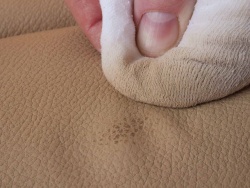
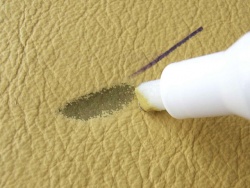
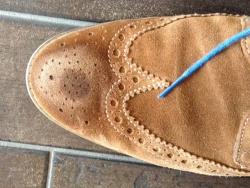
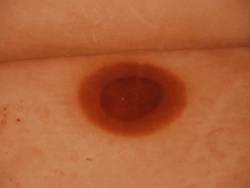

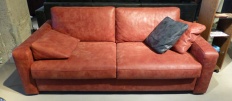


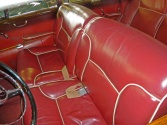

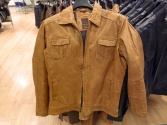
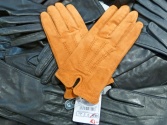
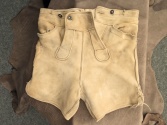
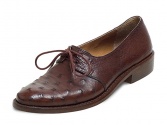
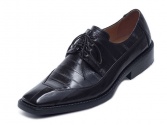
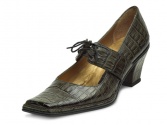
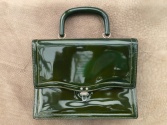
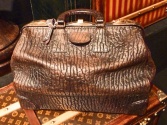
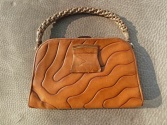

 a kotori web solution
a kotori web solution